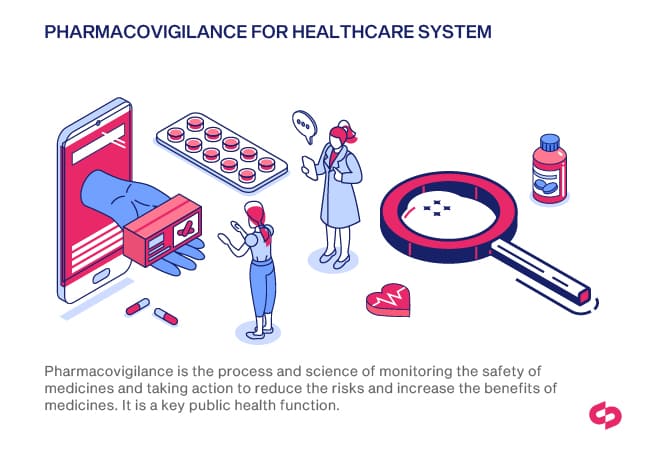Pharmacovigilance—the ongoing monitoring and prevention of adverse drug reactions (ADRs)—is one of the most critical components of modern healthcare. As pharmaceutical companies develop and market new drugs, monitoring potential side effects or misuse becomes essential to ensure patient safety.
However, traditional pharmacovigilance methods rely heavily on structured databases and voluntary reporting systems, which are often fragmented, slow, and incomplete. The rise of web scraping for pharmacovigilance is transforming how data is collected and analyzed. With advancements in digital data extraction, healthcare organizations and pharmaceutical companies now have access to real-time, multi-source data from social media, health forums, and online communities.
In this article, we’ll explore how web scraping enhances pharmacovigilance, its practical applications, and why leveraging web data can drastically improve drug safety and patient outcomes.
What is Pharmacovigilance and Why is it Important?
Pharmacovigilance refers to the continuous process of monitoring and assessing drugs for potential adverse effects throughout their life cycle—from clinical trials to post-market surveillance. While a drug is approved for public use under the premise that its benefits outweigh its risks, some adverse effects may only emerge once a broader population begins using the medication.
Key responsibilities of pharmacovigilance systems include:
- Detecting and assessing ADRs.
- Identifying drug misuse, errors, or lack of efficacy.
- Ensuring regulatory compliance and patient safety.
With millions of patients relying on medication worldwide, optimizing pharmacovigilance is critical to minimizing risks and improving healthcare outcomes.
The Challenges of Traditional Pharmacovigilance Systems
Historically, pharmacovigilance relied on healthcare professionals and patients reporting adverse reactions through structured databases and regulatory systems. However, this approach has significant limitations:
- Fragmented Data: Information is often scattered across multiple platforms, making it difficult to centralize and analyze.
- Underreporting: Many adverse events go unreported due to a lack of awareness, motivation, or accessible reporting channels.
- Redundancy: Reports frequently highlight already-known side effects, leading to inefficiencies.
- Time-Consuming Process: Manual data collection and analysis hinder real-time decision-making.
The digital transformation of healthcare has created new opportunities to address these challenges. By leveraging data from social media platforms, forums, and web-based communities, web scraping enhances pharmacovigilance efforts with real-time, comprehensive data analysis.
How Web Scraping Enhances Pharmacovigilance
1. Extracting Real-Time Data from Social Media
Patients frequently share their health experiences, medication use, and adverse reactions on platforms like Facebook, Twitter, Reddit, and Instagram. This unstructured data is a goldmine for identifying emerging safety signals.
Using advanced web scraping tools, pharmaceutical companies can extract:
- Posts mentioning specific drugs.
- Comments about side effects or adverse events.
- User sentiment and frequency of issues.
For example, during the COVID-19 pandemic, health agencies monitored social media for mentions of vaccine side effects, providing faster insights into public health trends.
2. Monitoring Health Forums and Niche Communities
Specialized health forums like PatientsLikeMe and MedHelp allow users to share personal experiences with diseases and medications. Patients often discuss ADRs, treatment outcomes, and drug efficacy, providing invaluable qualitative data.
Web scraping can systematically extract these insights to identify:
- Trends in patient-reported side effects.
- Comparisons between drugs treating the same condition.
- Early signals of rare or previously unknown adverse reactions.
This method ensures pharmacovigilance systems can capture data beyond the limitations of clinical trials.
3. Improving Data Centralization and Analysis
Web scraping doesn’t just collect raw data—it integrates and organizes it into centralized databases for further analysis. Sophisticated algorithms and AI-driven tools can clean, structure, and validate the extracted data, making it actionable.
This allows pharmaceutical companies and regulatory agencies to:
- Identify patterns across large datasets.
- Generate automated reports on ADR trends.
- Predict and mitigate potential risks early.
For instance, AI-powered tools can analyze patient posts across platforms to detect correlations between certain medications and side effects, enhancing risk assessment.
Practical Applications of Web Scraping for Pharmacovigilance

1. Early Detection of Adverse Drug Reactions
By scraping data from forums and social media, pharmaceutical companies can identify ADR signals that were missed during clinical trials. Real-time monitoring allows early interventions, such as issuing warnings or modifying drug formulations.
2. Drug Safety During Market Launch
When a new drug enters the market, web scraping can track its reception among patients and healthcare providers. By monitoring feedback and concerns, companies can quickly assess risks and improve patient safety.
3. Monitoring Drug Misuse and Abuse
Web scraping tools can identify mentions of medication misuse on forums, blogs, and social networks. This helps regulatory organizations prevent drug abuse and enforce stricter guidelines when necessary.
4. Enhancing Post-Marketing Surveillance
The life cycle of a drug doesn’t end with approval. Web scraping supports long-term post-marketing surveillance by continuously gathering and analyzing patient feedback, ensuring drugs remain safe throughout their use.
Challenges and Opportunities
While web scraping offers transformative benefits for pharmacovigilance, it also presents challenges:
- Data Privacy: Scraping user data must comply with regulations like GDPR and HIPAA. Partnering with compliant web scraping services ensures legal and ethical data collection.
- Heterogeneous Data: Data from social media and forums is unstructured and complex. AI-driven tools are essential for filtering noise and extracting meaningful insights.
- Algorithm Accuracy: Developing robust algorithms that identify ADR signals without false positives remains a work in progress.
Despite these challenges, advancements in AI, machine learning, and web scraping technologies are making pharmacovigilance more effective, efficient, and scalable.
Conclusion
The growing volume of web-based health data has revolutionized pharmacovigilance, allowing pharmaceutical companies and regulatory bodies to monitor drug safety more proactively than ever before. By leveraging web scraping for pharmacovigilance, organizations can:
- Identify adverse drug reactions in real time.
- Improve drug safety during and after market approval.
- Centralize and analyze patient-reported data for better decision-making.
As healthcare continues to undergo digital transformation, web scraping will play an increasingly pivotal role in safeguarding public health.
Ready to unlock the power of web data for pharmacovigilance? Contact us today to learn how our advanced web scraping solutions can help you improve drug safety and patient outcomes.

